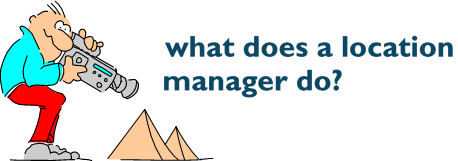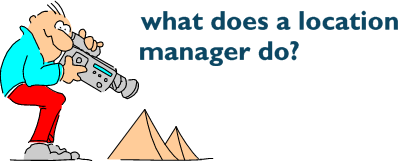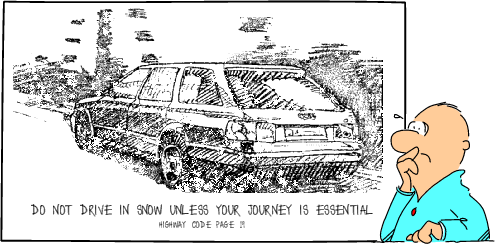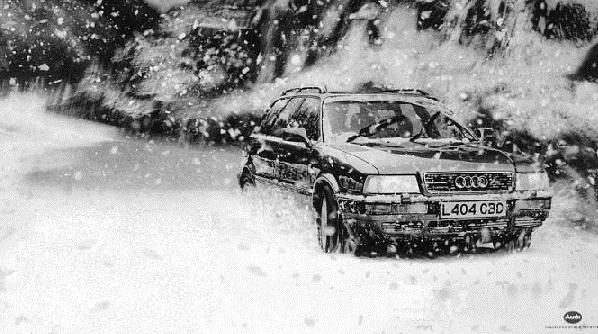


Many people's conception of a location scout / location manager is of somebody jet-setting around the world looking
for desert islands or jungle waterfalls. This can be true! There are jobs that come along which add
exotic immigration stamps to your passport. For example, much advertising is "aspirational" (think of the old Bounty
ads), and the location can often be as important as the storyline in selling the product.
Location Works over the years has handled film or
photographic shoots in the following countries:
Europe: France, Italy, Switzerland, Czech Republic (Prague, Marienbad,
Karlsbad), Slovak Republic, Spain, Gibraltar, Russia (Moscow & St
Petersburg), UK, Ireland, Holland, Greece. Scandinavia: Denmark, Norway (including Arctic Circle),
Sweden (including Arctic Circle). Iceland. North America: North Carolina, South
Carolina, Florida, New York, Texas, Arizona, New Mexico, Utah, Nevada,
Colorado, California, Alaska. Caribbean: Antigua, Bahamas, St Kits, Nevis,
Trinidad & Tobago, Bermuda. Africa: Chad, Kenya, Tanzania, Namibia,
South Africa. North Africa: Morocco, Libya (including Sahara), Egypt (Cairo,
Sinai Desert), Maderia, Canary Islands. Middle East: Israel (Tel Aviv,
Jerusalem, Negev Desert, Eilat, Red Sea). India, Sri Lanka. Far East: Thailand, Hong
Kong, Macau, Japan (Tokyo, Mount Fuji), Singapore, Bali, Australia, New
Zealand. South America: Brazil (Manaus, Amazonas, Brasilia, Fortaleza,
Recife, Rio de Janeiro, Sao Paolo), Chile, Venezuela.
So yes, it's true, we do get around!

90% of the work we do is inside the M25 (i.e. within 30 miles of
London; this would generally be true of other major centres of production -
90% of filming out of Hollywood is within 30 miles of central Los
Angeles). This is a matter of economics: the majority of filming,
television and advertising companies are in London, and a film crew has
accurately been described as a "mobile factory". You may have a generator
(mobile power station), canteen (catering truck & dining bus), toilets
(so called "honey-wagons"), wardrobe & make-up (including motor-homes
for the stars), and a reasonable sized workforce (construction crew,
lighting technicians, etc. etc.). This can be fifty vehicles and
a hundred crew. This tends to limit the distance that can be
travelled.
Not that you're supposed to know this: time and again we get asked to
find a "Spanish villa" in West London! and by the time it's on your screen
it may well look like the whole thing was done on the Costa del Sol.
- identify the type of location.
In the case of film shoots, either a script or storyboard arrives at our
office. This is broken down into locations and a schedule.
In the case of stills advertising, a layout may arrive from the
photographer or advertising agency. Let's take a stills shoot as our
example: following is the kind of layout we might receive.

Layouts can be better than this - and an awful lot worse.
In this instance, it's a car (an Audi) on a snow-covered road. The advert
is going to sell Audi cars on the basis of their superior road handling in
adverse conditions. Although you can't really tell from the layout, the art
director has in mind a lonely country road, perhaps in the Highlands of
Scotland.
Now here's a peculiarity of the advertising business: this shot was
intended for autumn/winter advertising, and so had to be photographed in
mid-summer. This happens quite a lot: the December issue of a magazine
will have been printed in November, the advertising & editorial organised in
October, so the picture of Mum, Dad and the kids around the Christmas tree
will have been photographed in August or September.
- research possible locations.

Obviously there are locations that are easy to find, and others that are
difficult. Finding the location is only one part of the problem....
Snow in mid-summer. Mm... "Snow plus road" is a difficult combination in
the northern hemisphere in summer. In the southern hemisphere, of course,
it's winter, and there will be snow in New Zealand's southern highlands. In
this instance it was felt that we didn't have the budget to go to real snow,
so we would use special effects within the U.K.
Next we must consider where to look. Although the most dramatic mountain
roads are to be found in abundance in Scotland, it was felt that the key to
this scene was not so much the landscape as the severity of the weather, and
little of the location would actually end up being recognisable in the shot.
North Wales was chosen as an area to research.
Over the years, Location Works has built up a considerable library of locations, and it's usually the first port of
call when we start looking for a location. Because we do a fair amount of
automobile advertising, we've a large section on country roads. The
mountains of Snowdonia were considered the best bet.
- do a "recce"

No matter how large and comprehensive our library gets, there is no
substitute for a location manager visiting the site and working out the
logistics. We might have a picture in the library of the very spot, but each
project is different, and the photographer's or director's requirements must
be matched to the right location. So one of our location managers hopped in
his car and did a four day survey of North Wales.
It's not just that the location must look good and conform to the brief,
it must also make practical sense. It's pointless looking for the right
place on a busy main road, since we will want to stop traffic during the
photography. There must be somewhere sensible to put the camera, and it must
be far enough back to get the right perspective on the scene. If, behind the
camera, the land slopes away suddenly, we might need to build a scaffolding
tower to get the camera into the right position. There's the parking of our
own vehicles and the equipment of the special effects team also to be taken
into consideration.
Bearing all the above in mind, the location manager aims to find and
photograph several possible locations. They don't just climb in their car and
drive! They'll have Ordnance Survey maps, and will have spent
some time identifying the right places to look. Notes will be taken about
orientation, and the photographs taken by the location manager will show the
locality comprehensively (the last thing you want is the reflection of an
electricity pylon in the bodywork of the car!).
So with any luck our location manager will return from his recce with a few hundred
digital photographs to put into a presentation. These will be shown to
the photographer/director/film company/agency and a decision taken about
which looks best.
- get permissions

Of course on top of everything else, the location manager will have got
the names and phone numbers of the local council, local police, found a good
hotel and spoken to the farmer who owns the field at each of the locations.
Now that one has been chosen, it's simply a matter of phoning up the right
people and telling them we're coming. Would that it were that simple! Each
and every one of them will require a call or an email
detailing who we are, what we are going to be doing, and exactly,
exactly when and where.
- do the shoot

So we get to the location
at dawn on the first day
and get the car there
by a covered transporter to keep it clean
we get the camera in position
on a scaffolding tower
close off the road
causing grief to the locals
we spray foam over the background
to look like snow
put tons of salt in the foreground
to look like snow
throw paper in front of the lens
to look like snow
shoot it time and again
so at least one of the shots looks right
and go home a week later
and...
- that's it.

Easy huh? In the interests of self-promotion and easy reading, the above
account hasn't given much emphasis to the multitudinous and perverse ways
things have of going WRONG!
But that story can wait until another day.
Click here to see the finished result...
 photographer: Russell Porcas
photographer: Russell Porcas
© Kell Gatherer 1998 - 2025
Locations for filming, photography and events: contact us on or email for further details.
|
 search history...
search history...  search history...
search history... 



